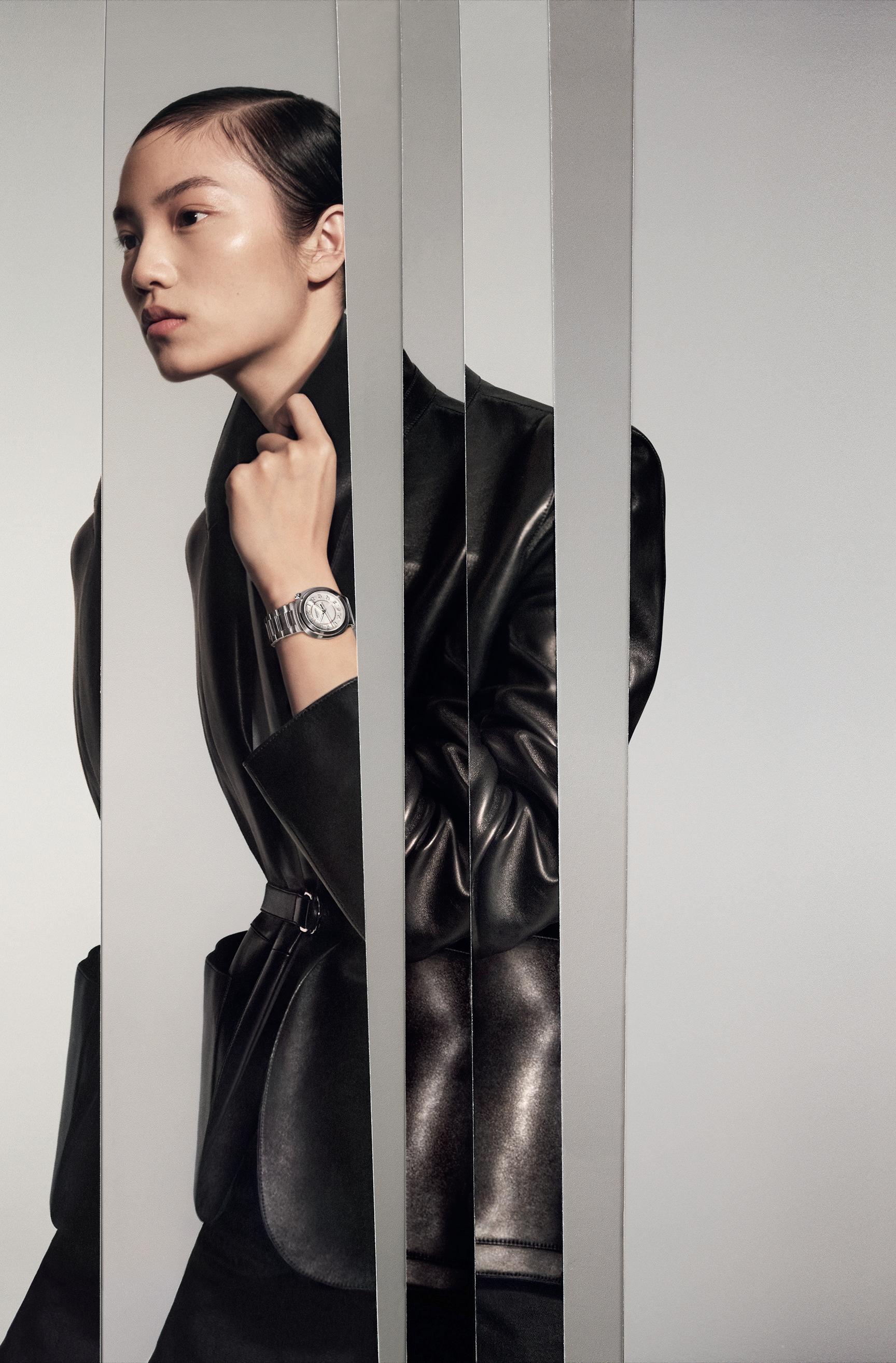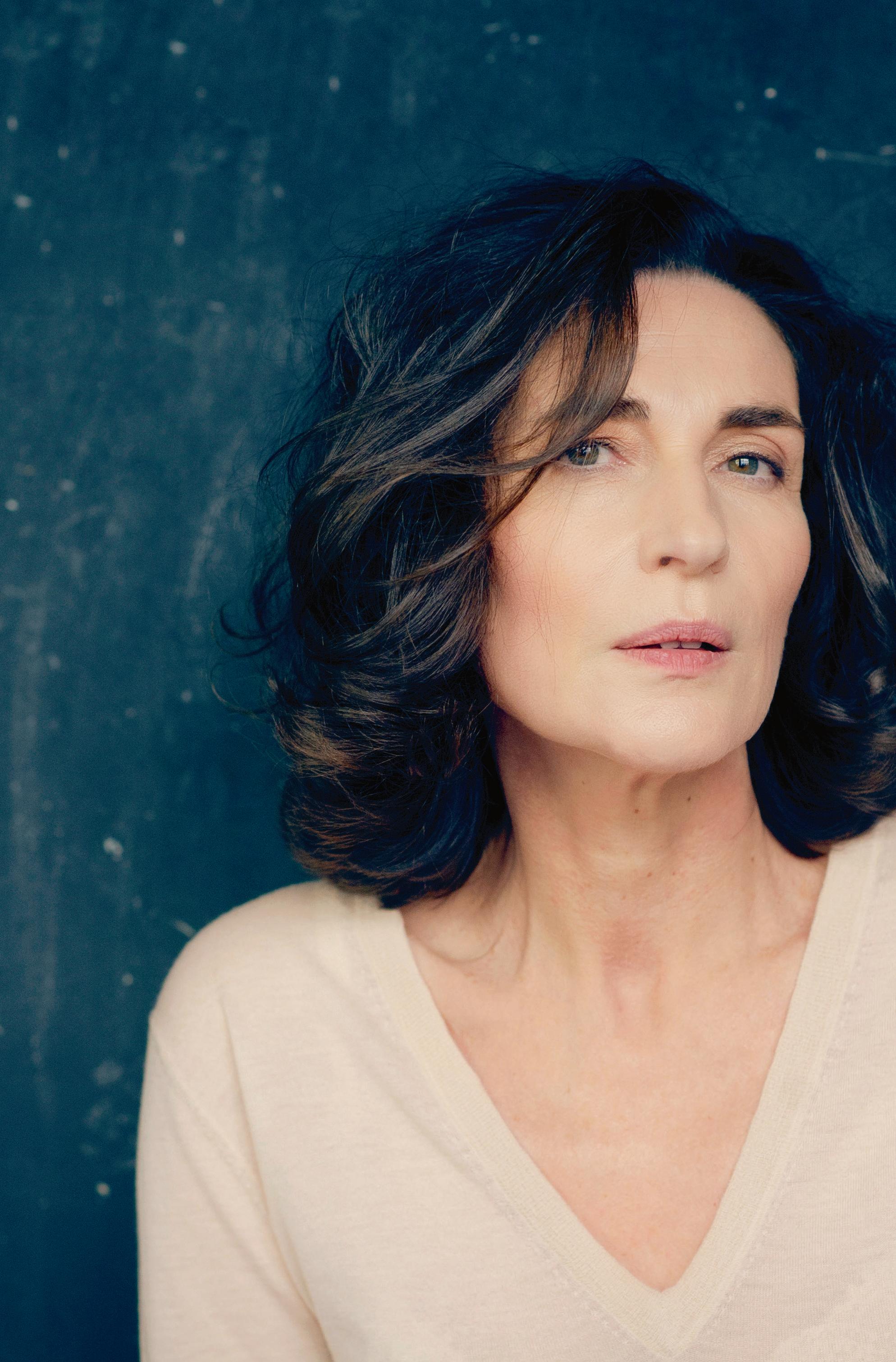
July 20, 2024


July 20, 2024

AMONG PUBLIC UNIVERSITIES IN NORTHEAST OHIO
AMONG PUBLIC UNIVERSITIES IN NORTHEAST OHIO
AMONG PUBLIC UNIVERSITIES IN NORTHEAST OHIO

At The University of Akron, students become confident leaders, engaged community members and career-ready graduates. We provide the connections and support to make their time in college result in much more than earning a degree.
At The University of Akron, students become confident leaders, engaged community members and career-ready graduates. We provide the connections and support to make their time in college result in much more than earning a degree.
At The University of Akron, students become confident leaders, engaged community members and career-ready graduates. We provide the connections and support to make their time in college result in much more than earning a degree.
Our students bring their passion, and we provide the possibilities.
Our students bring their passion, and we provide the possibilities.
Our students bring their passion, and we provide the possibilities.


Saturday, July 20, 2024, at 7 PM
The Cleveland Orchestra
Antonello Manacorda , conductor
FELIX MENDELSSOHN Overture to 10 minutes (1809–1847) A Midsummer Night’s Dream, Op. 21
HECTOR BERLIOZ
Les Nuits d’été
30 minutes (1803–1869) (Summer Nights), Op. 7
I. Villanelle (Country Song)
II. Le Spectre de la rose (The Ghost of the Rose)
III. Sur les lagunes (On the Lagoons)
IV. Absence
V. Au Cimetière, Clair de lune (At the Cemetery, Moonlight)
VI. L’Île inconnue (The Unknown Isle)
Véronique Gens, soprano
INTERMISSION 20 minutes
LUDWIG VAN BEETHOVEN Symphony No. 7 35 minutes (1770–1827) in A major, Op. 92
I. Poco sostenuto — Vivace
II. Allegretto
III. Presto
IV. Allegro con brio











Total approximate running time: 1 hour 35 minutes

Tonight’s concert is sponsored by The Goodyear Tire & Rubber Company.


Whether escaping the bustle of daily life with a beloved classic or discovering new worlds with the less familiar, come share the extraordinary this season with The Cleveland Orchestra .
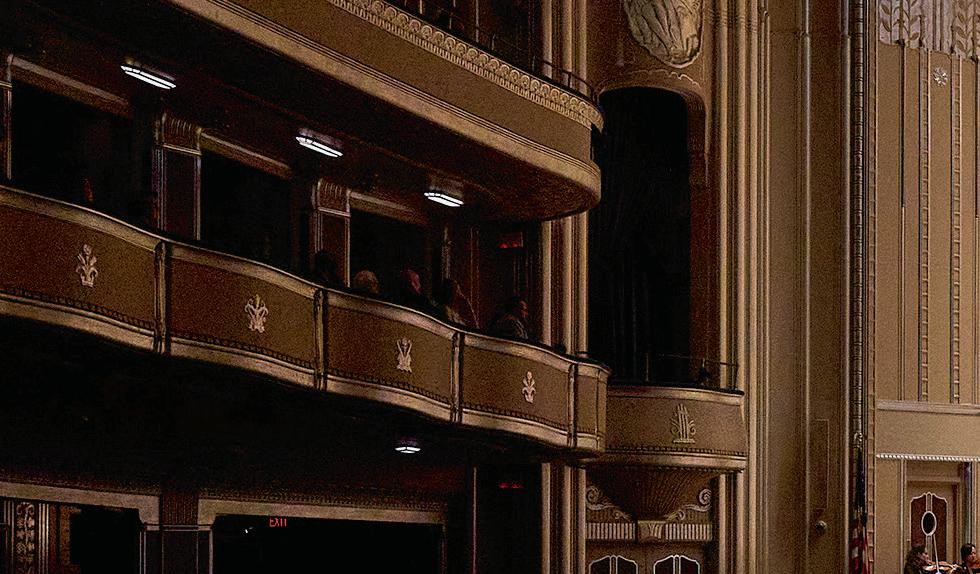
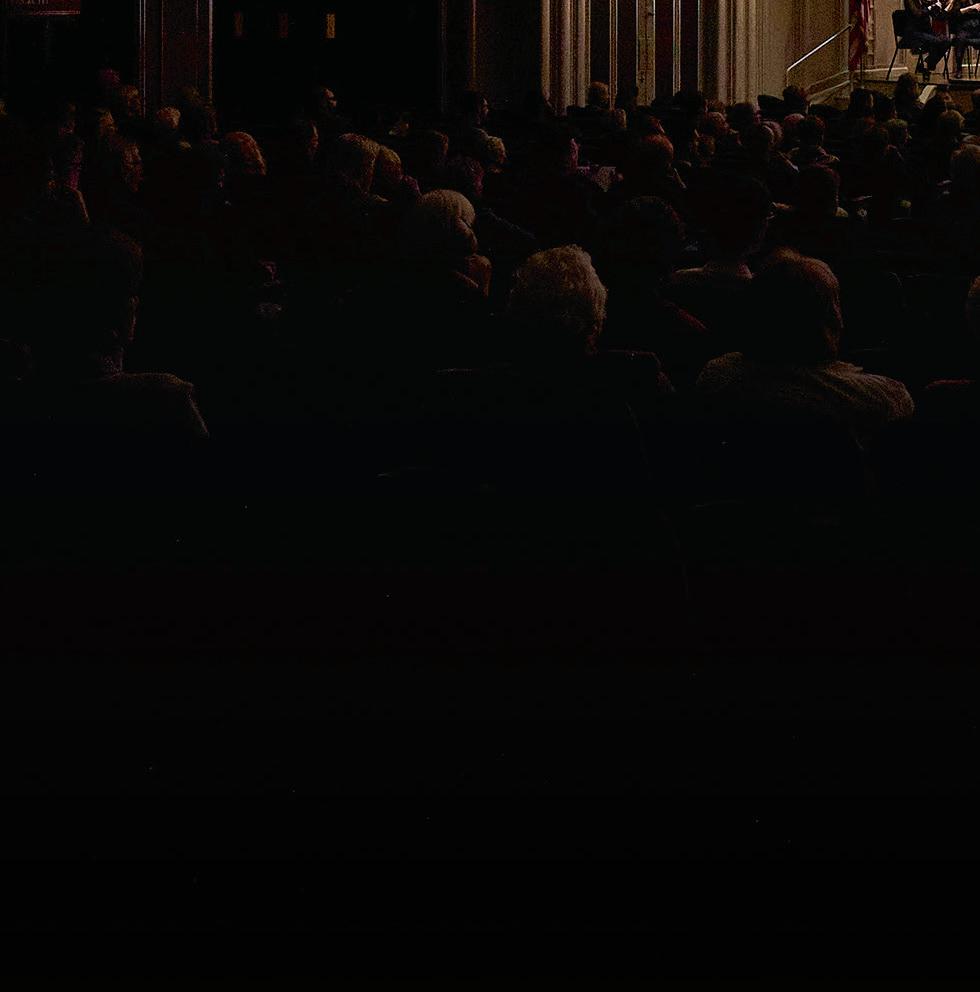


When you subscribe, you provide vital support to your Cleveland Orchestra and enjoy these exclusive benefits:
• The best seats at the best prices
• Free and easy ticket exchanges
•Purchase your parking in advance
• 20% off additional ticket purchases
• 10% off at The Cleveland Orchestra Store
•Money back guarantee

THE THREE WORKS on tonight’s program all open with music evocative of a light summer breeze. A rather fanciful biographer of Felix Mendelssohn’s claimed that the opening to his Midsummer Night’s Dream Overture was inspired by leaves rustling in the garden outside his family’s home. The first movement of Ludwig van Beethoven’s Symphony No. 7 includes a vigorous dance theme which seems to invite listeners to envision a playful summer festival. And Hector Berlioz’s Les Nuits d’été (Summer Nights) speaks for itself. Despite this program’s apparent summer theme, however, the three pieces have loose, if any, connections with the season.
Mendelssohn’s piece has perhaps the best claim to a summer theme. At age 17, inspired by a German translation of Shakespeare’s play, he wrote the overture in only a month. The music depicts the playfulness and mischief of fairies, the nobility of love, and the braying of a donkey-headed Nick Bottom. It premiered (in the dead of winter) to critical acclaim, catapulting the young Mendelssohn to fame and success.
Surprisingly, the title of Berlioz’s Les Nuits d’été is somewhat misleading. The first song is clearly set in springtime, and the text for the whole cycle comes from a collection of poems about death and lost love — far from summery subjects. The composer may have written the cycle specifically for the singer Marie Recio, his future wife, with whom he was having an affair. The second and fourth songs, the only ones performed during Berlioz’s lifetime, premiered — like Mendelssohn’s overture — in the cold of February.
Beethoven wrote his Seventh Symphony during a period of political turmoil, and some have suggested that, like his Third and Fifth symphonies, it was a reaction to Napoleon’s campaign on Europe. This symphony, too, saw a wintertime premiere — in December 1813 — but any seasonal gloom was immediately swept away in the audience’s enthusiastic response. Listeners demanded to hear the second-movement Allegretto again as an encore, and throughout the rest of the century, it often replaced slow movements in performances of other symphonies. It remains one of Beethoven’s best-loved creations to this day.
— Noah Hertzman
Noah Hertzman is The Cleveland Orchestra’s content intern and is a dual-degree student in composition at the Cleveland Institute of Music and history at Case Western Reserve University.
by Felix Mendelssohn
BORN: February 3, 1809, in Hamburg
DIED: November 4, 1847, in Leipzig
COMPOSED: 1826
WORLD PREMIERE: February 20, 1827, in Stettin, conducted by Carl Loewe
CLEVELAND ORCHESTRA PREMIERE: February 20, 1920, led by Music Director
Nikolai Sokoloff
ORCHESTRATION: 2 flutes, 2 oboes, 2 clarinets, 2 bassoons, 2 horns, 2 trumpets, tuba, timpani, and strings
DURATION: about 10 minutes
THE ROMANTIC GENERATION felt Shakespeare to be one of its own. How could it not, when the Bard’s works were filled with all the things the Romantics held dear: passionate love, fairy tales, times long ago, and places far away. It was at the beginning of the 19th century that Shakespeare’s plays began to exert a profound influence on composers. Beethoven based the slow movement of his String Quartet No. 1, Op. 18 on the tomb scene from Romeo and Juliet. Berlioz wrote a monumental dramatic symphony on the same subject, in addition to smaller works after Hamlet and King Lear, and an opera after Much Ado About Nothing.
Felix Mendelssohn started reading Shakespeare as a child during the 1820s. His family spent long hours reading through or acting out entire plays in the German translations by August Wilhelm Schlegel and Ludwig Tieck, two important Romantic literary figures. The Mendelssohn family had a close personal connection to these translations: Felix’s aunt was married to Schlegel’s brother Friedrich, one of the leading German philosophers of the time.
None of the plays captured the young Mendelssohn’s imagination more than A Midsummer Night’s Dream (or Ein Sommernachtstraum in the version he first encountered). In a letter written in summer 1826, the 17-year-old composer told his sister Fanny: “I have grown accustomed to composing in our garden; there I’ve completed two piano pieces in A major and E minor. Today or tomorrow I am going to dream there the Midsummer Night’s Dream. It is, however, an enormous audacity. … ” The overture was completed less than a month later.
Mendelssohn moved in the world of Oberon and Titania, the fairy rulers of the enchanted woods near Shakespeare’s Athens, with the grace and ease of an elf. The
four opening chords of the overture, played by the woodwinds and horns, made history with their delicate orchestration. In each chord, some new instruments are added, gradually expanding the range. The chords are all major with the exception of the third one, which is minor; a subtle interplay between the modes is thus introduced that will continue throughout the overture.
After this exceptional opening, we hear music that will forever be associated with Puck and the other elves and spirits in the forest. The fairy music is complemented by a more majestic, “earthly” melody, which turns out to be a quote from Carl Maria von Weber, whose own Oberon — not based on Shakespeare — was premiered the same year (1826), just two months before Weber’s death at age 40.

A third theme invokes the “hee-haw” of Bottom, the artisan-actor who, by magic, suddenly grows a donkey’s head and then proceeds to sweep fairy queen Titania off her beautiful feet. The three themes act out their own little comedy, evolving, interacting, and enchanting the listener. If we are to single out one detail, it must be the ending, where the “earthly” theme becomes absolutely celestial, played very softly and slowly by the violins as an exceptionally touching farewell gesture.
The overture premiered at a concert given in Stettin in February 1827, an occasion which marked the 18-year-old Mendelssohn’s first public appearance. Sixteen years later, once the composer had established himself in Europe, he was commissioned by Friedrich Wilhelm IV of Prussia to write incidental music for several plays produced at the court theater, including A Midsummer Night’s Dream. Mendelssohn provided 11 additional numbers to be performed between the acts and at appropriate moments during the play.
After the 1843 premiere of the production, one audience member remarked to Mendelssohn, “What a pity that your glorious music should have been wasted on such a silly play!” But time has been kinder to the pairing, with Mendelssohn’s sparkling music acting as the ideal complement to Shakespeare’s breezy, now-beloved drama.
— Peter Laki
Peter Laki is a musicologist and frequent lecturer on classical music. He is a visiting associate professor of music at Bard College.
by Hector Berlioz
BORN: December 11, 1803, in La Côte-Saint-André, Isère, France
DIED: March 8, 1869, in Paris
COMPOSED: voice and piano, 1840–41; orchestrated, 1843–56
WORLD PREMIERE: Though the full orchestrated cycle was not presented until after Berlioz’s lifetime, two of the songs — “Absence” and “Le Spectre de la rose” — were first performed in 1843 and 1856, respectively, with singers Marie Recio and Anna Bochkoltz-Falconi, conducted by the composer.
CLEVELAND ORCHESTRA PREMIERE: November 15, 1967, with soprano Judith Raskin and conductor Pierre Boulez
ORCHESTRATION: 2 flutes, oboe, 2 clarinets, 2 bassoons, 3 horns, harp, strings, and solo voice
DURATION: about 30 minutes
See page 12 for sung texts and translations.
THESE SIX SONGS HAVE BECOME some of Berlioz’s best loved works, especially favored by those who have little taste for the grandiose overstatement often (misguidedly) taken to be the composer’s normal mode of speech. The songs’ intimate character and chamber dimensions remove them from the Beethoven mania that dominated 19th-century concert halls, and yet they have an intense poetic quality that we have no difficulty in recognizing as Romantic.
We must assume that Berlioz was fond of them himself, although he rarely spoke or wrote about them and never performed or even heard the complete cycle in its orchestral form. The songs were composed for piano and voice in the years 1840–41, shortly after the symphony Roméo et Juliette, and published as songs for mezzo-soprano or tenor in 1841. Even if Berlioz intended them to be considered as a unified cycle at the time, which is debatable, he later orchestrated them for different voices, in some cases transposing them from their original keys.
The first to be orchestrated was “Absence.” This was done in Dresden in February 1843 as a vehicle for Marie Recio, the soprano who had recently entered the composer’s life and was later to become his second wife. She had sung it before with piano accompaniment, but gave the first orchestral performance in Leipzig on February 23, 1843, in the presence of Felix Mendelssohn (who particularly admired the double-bass entry at the cadence of the refrain).
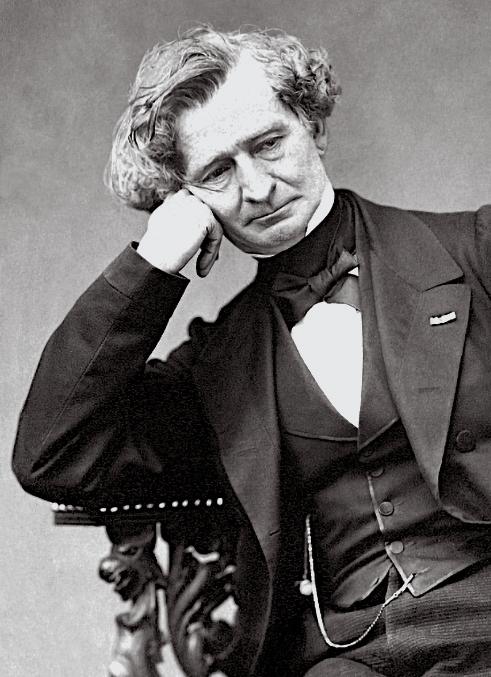
The rest of the songs were not orchestrated until more than 10 years later. “Le Spectre de la rose” (The Ghost of the Rose) appeared in a concert Berlioz gave in Gotha, near Weimar, in February 1856, and he then took on the task of orchestrating the remaining four songs, which were published as a set later that year by Jakob Rieter-Biedermann in Winterthur, Switzerland. Berlioz associated this music entirely with his concerts away from Paris and dedicated each song to a different member of the Weimar Kapelle, whose talents he had many occasions to appreciate. Two of the songs, “Le Spectre de la rose” and “Sur les lagunes” (On the Lagoons), are pitched in lower keys than in the original piano version, although the set can still be (and today usually is) undertaken by a single singer.
The six poems are taken from the collection La Comédie de la mort (The Comedy of Death) by Berlioz’s friend Théophile Gautier. They met regularly at the opera and at concerts in their roles as newspaper critics, and the poems Berlioz selected can readily be interpreted as reflecting some of his own feelings in the years of their composition. The first and last songs have a joyous open-air tone, while the four central songs explore darker modes of imagery and feeling.
“Villanelle,” named after a type of peasant or ballad-song, was probably inspired by the third movement of Beethoven’s Eighth Symphony, whose repeated chords are echoed at the beginning and which suggested to Berlioz the image of children picking flowers in the fields, as in Gautier’s poem. The three verses are harmonized differently, adding new subtleties each time.
“Le Spectre de la rose” evokes the image of a flower brought home from the ball, later made famous as a ballet by Vaslav Nijinsky. But the rose, though dead, is not to be pitied; rather, its resting place on the young girl’s breast is to be envied even by kings. A solo cello and the harp add color to the scoring, while the bassoons, always regarded by Berlioz as vulgar instruments, are silent in this song.
As his boat dips across the lagoon (“Sur les lagunes”), the poet mourns his dead beloved. Images of tears, night, and death prevail. Not even the mourning dove can raise his spirits. Except perhaps at the end of his opera Les Troyens (The Trojans), Berlioz never wrote a lament as impenetrably dark as this.
In “Absence,” although there is little to rejoice in, the lover is at least alive, though far distant. Overlapping chords of winds and strings suggest the agony of separation,
and the key of F-sharp major is, almost by definition, infinitely remote.
In “Au Cimetière, Clair de lune” (At the Cemetery, Moonlight), the dove again sings its mournful song. Simple string chords set the flutes and clarinets in sharp relief. The other kind of relief comes with the last song, “L’Île inconnue” (The Unknown Isle), in which we are taken on a global dream-tour, touching on the delights of distant lands. But even paradise, we are bitterly reminded, cannot promise the certainty of perfect love.
— Hugh Macdonald
Hugh Macdonald is Avis H. Blewett Professor Emeritus of Music at Washington University in St. Louis. He has written books on Beethoven, Berlioz, Bizet, and Scriabin, as well as Music in 1853: The Biography of a Year.




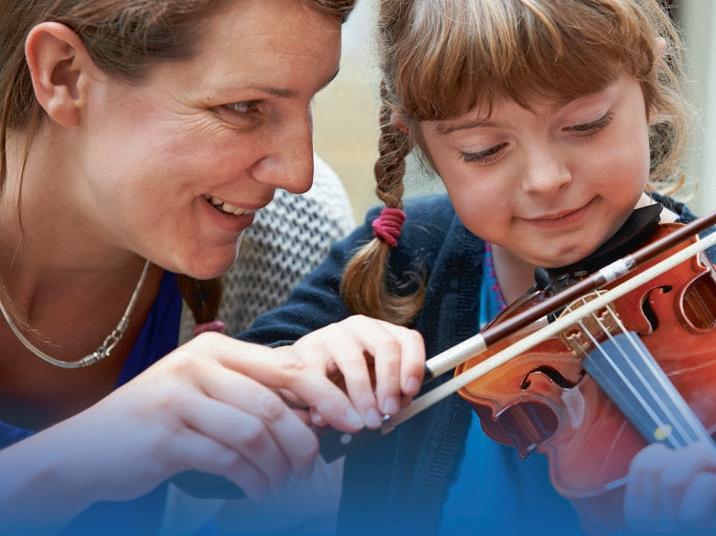


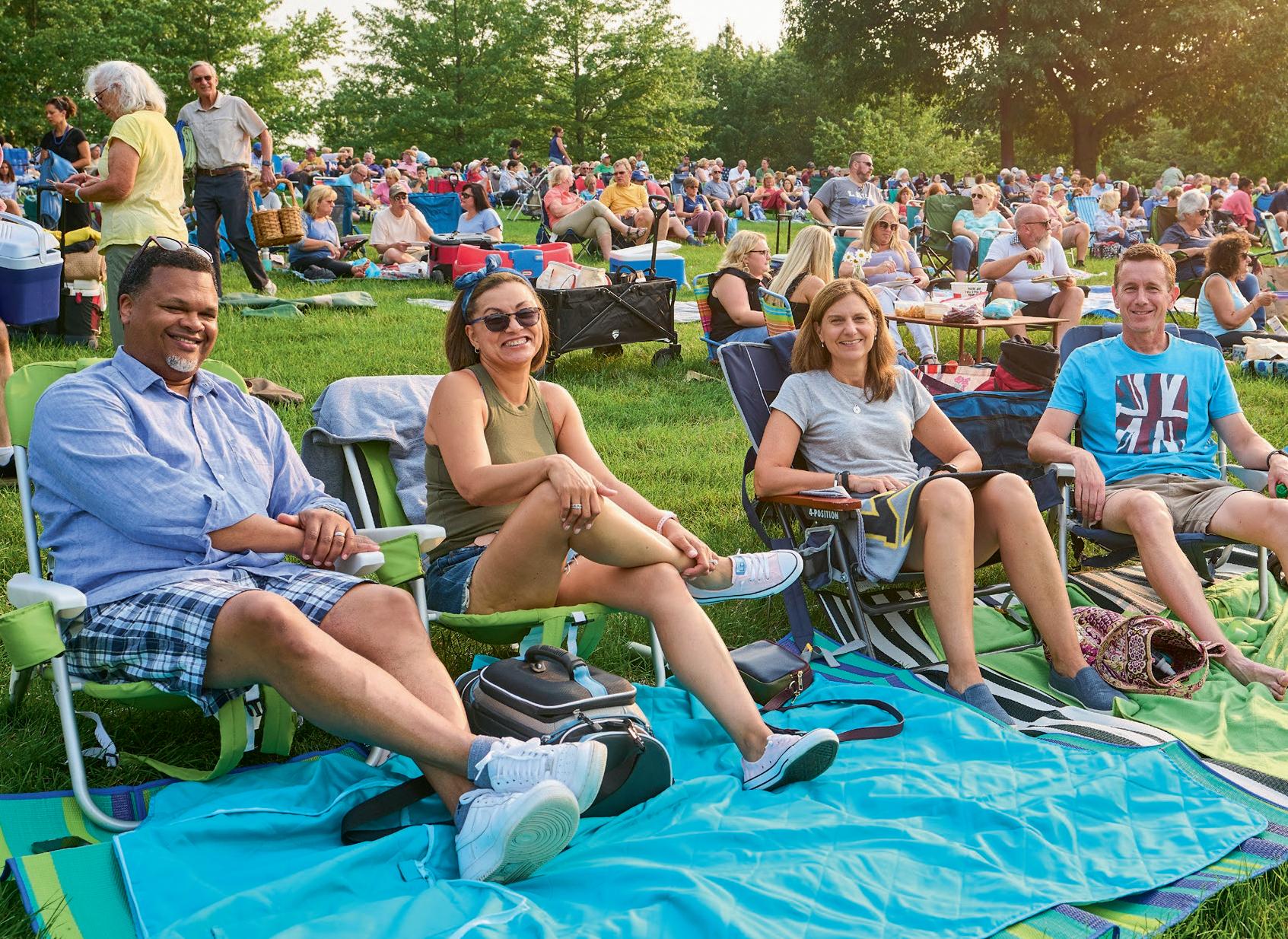

Text by Théophile Gautier
English translation by Hugh Macdonald
I. Villanelle (Country Song)
Quand viendra la saison nouvelle, Quand auront disparu les froids, Tout les deux nous irons, ma belle, Pour cueillir le muguet au bois; Sous nos pieds égrenant les perles, Que l’on voit au matin trembler, Nous irons écouter les merles siffler.
Le printemps est venu, ma belle, C’est le mois des amants béni, Et l’oiseau, satinant son aile, Dit des vers au rebord du nid.
Oh! viens donc sur ce banc de mousse, Pour parler des nos beaux amours, Et dis-moi de ta voix si douce: Toujours!
Loin, bien loin, égarant nos courses, Faisons fuir le lapin caché, Et le daim au miroir des sources
Admirant son grand bois penché; Puis, chez nous, tout heureux, tout aises, En paniers, enlaçant nos doigts, Revenons rapportant des fraises des bois.
When the new season comes, When the frosts have gone, You and I, my dearest, will go Picking lily-of-the-valley in the woods;
Our feet will scatter the dewdrops
That tremble in the morning light.
We’ll listen to the blackbirds’ call.
Spring has come, my dearest,
The month adored by lovers,
And on the edge of its nest
The bird sings poetry as it preens its feathers.
Oh, come and talk about our beautiful love
On this mossy bank,
And say in your soft voice: Forever!
As we wander far, far away,
Let’s scare away the lurking rabbit
And the buck admiring its great antlers Mirrored in the brook.
Then let’s go home, happy and at ease,
Our fingers entwined, Carrying baskets of strawberries growing wild.
II. Le Spectre de la rose (The Ghost of the Rose)
Soulève ta paupière close
Qu’effleure un songe virginal,
Je suis le spectre d’une rose
Que tu portais hier au bal.
Tu me pris encore emperlée
Des pleurs d’argent de l’arrosoir, Et parmi la fête étoilée
Tu me promenas tout le soir.
Ô toi qui de ma mort fus cause,
Sans que tu puisse le chasser, Toutes les nuits mon spectre rose
À ton chevet viendra danser.
Mais ne crains rien, je ne réclame
Ni messe ni De Profundis;
Ce léger parfum est mon âme, Et j’arrive du paradis.
Open those eyelids
Lost in girlish dreams!
I am the ghost of the rose
You wore yesterday to the ball.
You picked me still sparkling
With silver tears from watering, And at the glittering fête
You paraded me all night long.
O you who caused my death, Every night my rose-ghost will come And dance at your bedside, And you will not be able to drive it away.
But have no fear, I ask for
Neither a Mass nor a funeral; This soft perfume is my soul, And I come from Paradise.
Mon destin fut digne d’envie; Et pour avoir un sort si beau, Plus d’un aurait donné sa vie,
Car sur ton sein j’ai mon tombeau,
Et sur l’albâtre où je repose
Un poète, avec un baiser,
Écrivit: Ci-gît une rose
Que tous les rois vont jalouser.
III. Sur les lagunes (On the Lagoons)
Ma belle amie est morte,
Je pleurerai toujours;
Sous la tombe elle emporte
Mon âme et mes amours.
Dans le ciel, sans m’attendre, Elle s’en retourna;
L’ange qui l’emmena
Ne voulut pas me prendre.
Que mon sort est amer!
Ah! sans amour, s’en aller sur la mer!
La blanche créature
Est couchée au cercueil;
Comme dans la nature
Tout me paraît en deuil!
La colombe oubliée
Pleure et songe à l’absent,
Mon âme pleure et sent
Quelle est dépareillée.
Que mon sort est amer!
Ah! sans amour, s’en aller sur la mer!
Sur moi la nuit immense
S’étend comme un linceul;
Je chante ma romance
Que le ciel entend seul.
Ah! comme elle était belle
Et comme je l’aimais!
Je n’aimerai jamais
Une femme autant qu’elle.
Que mon sort est amer!
Ah! sans amour, s’en aller sur la mer!
Reviens, reviens, ma bien-aimée!
Comme une fleur loin du soleil,
La fleur de ma vie est fermée,
Loin de ton sourire vermeil.
My fate was enviable; Many would have given their lives
For so beautiful an end.
For my grave is on your breast
And on the pure whiteness where I rest
A poet wrote, with a kiss: “Here lieth a rose
Which all kings will envy.”
My beautiful love is dead,
I’ll weep forever;
Beneath the grave she has taken
My soul and my love.
She went back to heaven
Without waiting for me;
The angel that took her
Left me behind.
How bitter is my fate!
Ah, left to sail away loveless on the sea!
The fair creature
Lies in her coffin.
As in nature itself,
Everything seems to be in mourning:
The abandoned dove
Weeps and dreams about her loss.
My soul weeps and feels
No longer whole.
How bitter is my fate!
Ah, left to sail away loveless on the sea!
The immensity of night
Covers me like a shroud.
I sing my song,
But only the sky can hear it.
Oh how beautiful she was,
And how much I loved her!
I will never love a woman
As much as her.
How bitter is my fate!
Ah, left to sail away loveless on the sea!
Come back, come back, my beloved!
Like a flower deprived of the sun,
The flower of my life has faded
For lack of your golden smile.
CONTINUED ON NEXT PAGE
CONTINUED
Entre nos cœurs quelle distance,
Tant d’espace entre nos baisers.
Ô sort amer! ô dure absence!
Ô grands désirs inapaisés!
Reviens, reviens, ma bien-aimée! …
D’ici là-bas, que de campagnes, Que de villes et de hameaux,
Que de vallons et de montagnes, À lasser le pied des chevaux!
Reviens, reviens, ma bien-aimée! …
What a distance between our hearts, What an abyss between our kisses!
O bitter fate, O painful absence, O immense unrequited longing!
Come back, come back, my beloved! …
Between us nothing but open country, Nothing but towns and villages, Nothing but valleys and mountains, Enough to tire the horses’ feet!
Come back, come back, my beloved! …
V. Au Cimetière, Clair de lune (At the Cemetery, Moonlight)
Connaissez-vous la blanche tombe,
Où flotte avec un son plaintif
L’ombre d’un if?
Sur l’if, une pâle colombe,
Triste et seule, au soleil couchant,
Chante son chant.
Un air maladivement tendre,
À la fois charmant et fatal,
Qui vous fait mal,
Et qu’on voudrait toujours entendre;
Un air, comme en soupire aux cieux
L’ange amoureux.
On dirait que l’âme éveillée
Pleure sous terre, à l’unisson
De la chanson,
Et, du malheur d’être oubliée,
Se plaint dans un roucoulement
Bien doucement.
Sur les ailes de la musique
On sent lentement revenir
Un souvenir;
Une ombre, une forme angélique
Passe dans un rayon tremblant, En voile blanc.
Les belles de nuit, demicloses,
Jettent leur parfum faible et doux
Autour de vous,
Et le fantôme aux molles poses
Murmure en vous tendant les bras:
Tu reviendras!
Do you know the white tomb
Where the yew’s shadow waves With a plaintive sound?
In the yew’s branches a pale dove, Sad and lonely, sings its song
As evening falls.
It is a sickly tender melody, Both alluring and deadly; It will harm you,
Though you always want to hear it; It is a melody such as a lovelorn angel Might breathe to the heavens.
You would think an awakened soul
Was weeping in unison
From beneath the earth,
And, at the misery of being abandoned, Was sobbing and cooing
Very softly.
On the wings of music
You feel memories slowly Coming back;
A shadow, an angelic form
Passes in a flickering light, Veiled in white.
Night flowers, half closed, Waft their faint sweet scent
Over you,
And the vague outline of a ghost
Reaches out to you and whispers: “You will come back!”
Oh! jamais plus près de la tombe
Je n’irai, quand descend le soir.
Au manteau noir, Écouter la pâle colombe
Chanter, sur la pointe de l’if, Son chant plaintif!
Dites, la jeune belle,
Où voulez-vous aller?
La voile enfle son aile, La brise va souffler!
L’aviron est d’ivoire, Le pavillon de moire, Le gouvernail d’or fin;
J’ai pour lest une orange, Pour voile, une aile d’ange;
Pour mousse un séraphin.
Dites, la jeune belle, Où voulez-vous aller?
La voile enfle son aile, La brise va souffler!
Est-ce dans la Baltique?
Dans la Mer Pacifique?
Dans l’île de Java?
Ou bien est-ce en Norvège, Cueillir la fleur de neige, Ou la fleur d’Angsoka?
Dites, la jeune belle, Où voulez-vous aller?
Menez-moi, dit la belle, À la rive fidèle
Où l’on aime toujours.
Cette rive, ma chère, On ne la connaît guère,
Au pays des amours.
Où voulez-vous aller?
La brise va souffler.
Oh, I’ll never go near the grave again As evening falls, with its Dark mantle, To hear the pale dove Singing its plaintive song High up in the yew.
Tell me, my young beauty, Where would you like to go?
The wind fills the sail And the breeze will blow!
The oar is made of ivory, The flag of silk, The rudder of fine gold. My ballast is an orange, My sail an angel’s wing, My cabin-boy a seraph.
Tell me, my young beauty, Where would you like to go?
The wind fills the sail
And the breeze will blow!
To the Baltic?
To the Pacific Ocean?
To the island of Java?
Or perhaps to Norway
To pick snowdrops, Or the flower of Angsoka?
Tell me, my young beauty, Where would you like to go?
“Take me,” said the girl, “To those faithful shores
Where one is always in love.”
“Such shores, my dear, Scarcely exist
In the land of love.”
Where would you like to go?
The breeze will blow.
by Ludwig van Beethoven
BORN: December 16, 1770, in Bonn
DIED: March 26, 1827, in Vienna
COMPOSED: 1811–12
WORLD PREMIERE: December 8, 1813, in Vienna, with the composer conducting
CLEVELAND ORCHESTRA PREMIERE: April 20, 1922, conducted by Music Director Nikolai Sokoloff
ORCHESTRATION: 2 flutes, 2 oboes, 2 clarinets, 2 bassoons, 2 horns, 2 trumpets, timpani, and strings
DURATION: about 35 minutes
THE YEAR 1812 WAS A MOMENTOUS TIME for Beethoven, just as it was for Napoleon Bonaparte. And it can easily be said that things went badly for both of them.
Napoleon’s foolhardy invasion of Russia, begun in 1812, led inevitably to his defeat at Waterloo three years later, and to exile away from the excitement and commanding commotion of human (and French national) society.
Beethoven’s own inner exile was also coming to a new finality, as 1812 marked a new turning-point, when he had to face the social difficulties arising from his deafness. It was clear now that his future would be quite isolated from the everyday world of others, and especially from female companionship.
1812 is also the year of Beethoven’s famous letter to the “Immortal Beloved,” likely Antonie Brentano, an aristocratic Viennese woman (with a 10-year-old daughter) married to a Frankfurt businessman. The letter is ambiguous in many ways, but it suggests a mutual passion and a profound sense of resignation to the impossibility of a future together. Beethoven was bitterly critical of adultery in others, a further psychological obstacle, whose force we can only guess at.
At all events, the great stream of music that had been flowing abundantly since the “Heiligenstadt” crisis 10 years before — the “middle-period” masterpieces that stemmed from his first coming to terms with his growing deafness — now began to dry up. The rest of the decade is marked by recurrent bouts of depression and the production of very little music.
Out of these troubles were ultimately born the transcendent works of his final years — the last piano sonatas, the late string quartets, and the Ninth Symphony. Although
Beethoven completed his Seventh and Eighth symphonies before the curtain of silence fell completely, he made little progress with the Ninth, conceived at that time as part of a three-symphony group. The Seventh was, in fact, mostly in place before the drama of 1812 unfolded.

The Seventh has always been regarded as one of the mightiest of the nine, less forceful perhaps than the Fifth, less ambitious than the Ninth, smaller than the Third, but broader in range and spirit than any other. The key-color of A major is unusual in Beethoven’s orchestral music, depending partly on the exultant sound of horns in A major, one of that instrument’s highest registers. The sense of a “divine dance,” as Richard Wagner called the Seventh, is very strong in both first and last movements as well as in the scherzo, driven by powerful rhythmic energy and heavy instrumentation. Meanwhile, the Allegretto, though full of charm, has a sense of inexorable fatality.
The slow introduction to the first movement is a huge free-standing structure of its own, only slowly giving way to the persistent E’s that herald the start of the main Allegro section and its relentless dancing rhythm. Two striking moments in this great movement should have our attention. First, in the recapitulation (or return) the texture suddenly lightens to allow the oboe to take the melody in a thinner, fresher texture, like a brief clearing of persistent clouds. And, at the end, the lower strings set up a bizarre grumbling ostinato (repetition) that seems to be stuck in a groove until the final cadences come to the rescue. This is the passage that elicited Carl Maria von Weber ’s famous remark that Beethoven had shown himself “fit for the madhouse.”
So popular was the Allegretto second movement in the 19th century that it was often played as a concert piece on its own and even, on occasion, substituted for the slow movements of other symphonies! Yet, of the entire symphony, this is the movement that most strongly looks forward to the Romantic sensibilities of Berlioz, Robert Schumann, Mendelssohn, and others — all of whom seem to have derived creative benefits directly from it. Schubert must have been bewitched by its hypnotic rhythm, which he often adopted. The opening A-minor passage, gradually growing in sound like an approaching procession, leads, somewhat surprisingly, to a glowing section in a major tonality, scored for winds over a still-throbbing string accompaniment. Each section is heard once more before the close, a characteristic parting passage with melodic fragments thrown from one instrument to another. Almost no other movement in all Beethoven leaves such haunting memories as this.
The scherzo third movement is a persistent alternation of a loud and vivacious triple-meter dance, with a calmer, static trio section that winds its way over low horns and basses. Thus, one part of the movement takes wing, the other is rooted to the ground. The old tradition that symphonic finales should be light and breezy is firmly buried by the Seventh’s fourth movement, one of the heaviest blockbusters in the symphonic repertory. Constant hammer-blows (on off-beats) and a shortage of quiet music puts Beethoven in the role of a prankish ringmaster. Beethoven’s humor sometimes takes the form of subtle jokes that play on the audience’s gullibility. But here the trick is not subtle at all. We watch (hear) him work his magic directly in front of us. We are mesmerized, amazed, and dumbfounded, even as we see exactly how it’s done.
— Hugh Macdonald




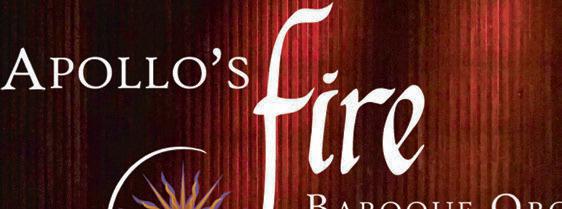

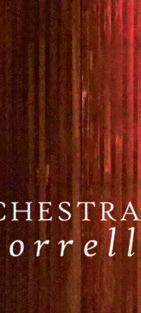
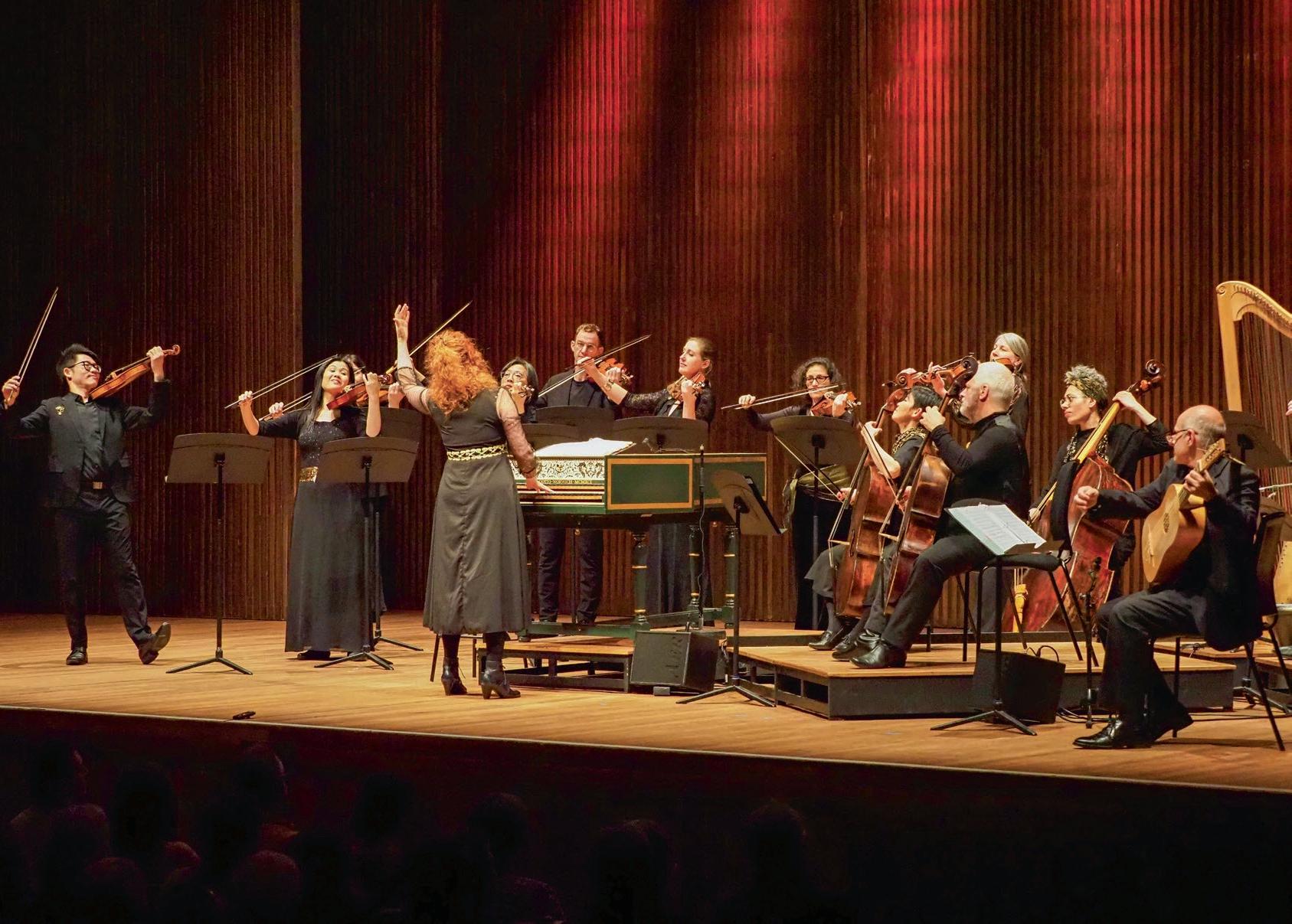
“Sorrell and her DAZZLING period band... are incandescent.”
rd
TICKETS & SUBSCRIPTIONS ON SALE NOW!
OCTOBER 18-22 | BACH’S Brandenburg Concertos
NOVEMBER 14-17 | Hope & Solitude
DECEMBER 4-8 | WASSAIL! An Irish-Appalachian Christmas
DECEMBER 10-14 | Handel’s MESSIAH
FEBRUARY 6-9 | Virtuoso Brilliance
FEBRUARY 27 - MARCH 2 | Classical Sparks
APRIL 4 – MAY 4 | BACHANALIA!
In restaurants, schools, churches. and concert halls… Bach & Apollo’s Fire take over Northeast Ohio for 30 days!
APRIL 4-8 | BACH’S B Minor Mass
Mainstage Concerts
Family Concerts - April 26-27
“Bach’s Amazing Musical Family”
Baroque Bistro Concerts - May 2-4
Bach’s Coffee Cantata, semi-staged
...plus Music Workshops in public schools around NEO and a Conductors’ Workshop led by Jeannette Sorrell.
conductor
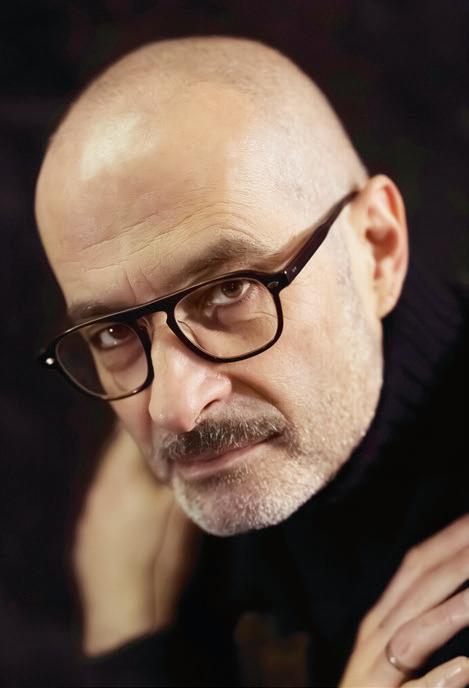
An Italian with a strong affinity for the German repertoire and a “melodist by nature” (Der Tagesspiegel ), Antonello Manacorda’s versatility as a conductor lies in the wealth of his musical and cultural influences. Born in Turin to an Italian-French family, Manacorda was a founding member and long-time concertmaster of the Mahler Chamber Orchestra, founded by Claudio Abbado, before studying conducting with Jorma Panula . Today, Manacorda can be heard just as frequently at the world’s most important opera houses as he can leading symphony orchestras. He has served as artistic director of the Kammerakademie Potsdam since 2010 and will retire as its chief conductor at the end of the 2024–25 season, although he will remain associated with the orchestra as its honorary conductor.
Opera productions will take Manacorda to the Stuttgart State Opera (Il trovatore), Royal Opera House (Les contes d’Hoffmann), Zurich Opera (Le nozze di Figaro), and Opéra National de Paris (Pelléas et Mélisande) in both current and upcoming seasons.
During the 2024–25 season, Manacorda will guest conduct the Mahler Chamber Orchestra, Rundfunk-Sinfonieorchester Berlin, Finnish Radio Symphony Orchestra, and Royal Philharmonic Orchestra. He will also perform a concert version of Weber ’s Der Freischütz with the Kammerakademie Potsdam in Potsdam, Paris, Baden-Baden, and Berlin.
In recent seasons, Manacorda has worked with the Bavarian Radio Symphony Orchestra, Orchestra dell’Accademia Nazionale di Santa Cecilia, Berlin Philharmonic, Royal Stockholm Philharmonic Orchestra, and Gewandhausorchester Leipzig, among others. He has also enjoyed great success with debuts at the Metropolitan Opera, Bavarian State Opera, and Semperoper Dresden.
With the Kammerakademie Potsdam, Manacorda has recorded critically acclaimed cycles of Mendelssohn’s and Schubert’s symphonies for Sony Classical. The ensemble was named “Orchestra of the Year” at both the 2015 ECHO Klassik and 2022 OPUS KLASSIK awards. In 2022, Manacorda and the orchestra began recording the symphonies of Beethoven, which have long played a central role in their concerts — the complete recording was released by Sony Classical in May 2024.
soprano

After shining over the Baroque stage for over a decade, Véronique Gens has established a solid international reputation and is today considered one of the best interpreters of Mozart and the French repertoire. Her repertoire is composed of the great roles of Mozart (Rosina, Donna Elvira, Vitellia, Fiordiligi) and the tragédie lyrique (Iphigénie en Tauride, Iphigénie en Aulide, Alceste), but also later roles such as Alice (Falstaff ), Eva (Die Meistersinger), Madame Lidoine (Dialogues des Carmélites), and Missia (The Merry Widow). Gens gives many concerts and recitals all over the world, notably in Paris, Dresden, Berlin, Beijing, Vienna, Prague, London, Stockholm, Moscow, Geneva, and Edinburgh.
She has performed on the greatest opera stages in the world, including the Opéra National de Paris, Royal Opera House, Wiener Staatsoper, Bayerische Staatsoper, La Monnaie, Gran Teatre del Liceu, Teatro Real, Scala di Milano, and Nationale Opera in Amsterdam, as well as at the festivals of Aix-en-Provence, Salzburg, Glyndebourne, and Tanglewood.
In 1999, Gens was awarded Artiste lyrique de l’année at the Victoires de la Musique Classique. She has also been promoted to the rank of Chevalier in the French order of La Légion d’Honneur as well as Commandeur des Arts et des Lettres and Officier de l’Ordre national du Mérite. Her many recordings (more than 80 CDs and DVDs) have received numerous awards.
Gens’s noteworthy projects in the upcoming seasons include Iphigénie en Aulide at the Greek National Opera in Athens and Dialogues des Carmélites at the Théâtre des Champs-Elysées. In concert, she will sing Lully ’s Persée with Le Concert Spirituel, Lully’s Proserpine with Les Talens Lyriques at Versailles, Ravel ’s Shéhérazade at the Berlin Konzerthaus, and Martin’s In terra pax with the Münchner Philharmoniker. Gens will also appear in recital with pianist Susan Manoff and with the ensembles I Giardini and Les Surprises.
Franz Welser-Möst Music Director
KELVIN SMITH FAMILY CHAIR
FIRST VIOLINS
Liyuan Xie
FIRST ASSOCIATE CONCERTMASTER
Virginia M. Lindseth, PhD, Chair
Jung-Min Amy Lee
ASSOCIATE CONCERTMASTER
Gretchen D. and Ward Smith Chair
Jessica Lee
ASSISTANT CONCERTMASTER
Clara G. and George P. Bickford Chair
Stephen Tavani
ASSISTANT CONCERTMASTER
Dr. Ronald H. Krasney Chair
Wei-Fang Gu
Drs. Paul M. and Renate H. Duchesneau Chair
Kim Gomez
Elizabeth and Leslie Kondorossy Chair
Chul-In Park
Harriet T. and David L. Simon Chair
Miho Hashizume
Theodore Rautenberg Chair
Jeanne Preucil Rose
Larry J.B. and Barbara S. Robinson Chair
Alicia Koelz
Oswald and Phyllis Lerner Gilroy Chair
Yu Yuan
Patty and John Collinson Chair
Isabel Trautwein
Trevor and Jennie Jones Chair
Katherine Bormann
Analisé Denise Kukelhan
Gladys B. Goetz Chair
Zhan Shu
Youngji Kim
Genevieve Smelser
SECOND VIOLINS
Stephen Rose*
Alfred M. and Clara T. Rankin Chair
Jason Yu2
James and Donna Reid Chair
Eli Matthews 1
Patricia M. Kozerefski
and Richard J. Bogomolny Chair
Sonja Braaten Molloy
Carolyn Gadiel Warner
Elayna Duitman
Ioana Missits
Jeffrey Zehngut
Sae Shiragami
Kathleen Collins
Beth Woodside
Emma Shook
Dr. Jeanette Grasselli Brown
and Dr. Glenn R. Brown Chair
Yun-Ting Lee
Jiah Chung Chapdelaine
VIOLAS
Wesley Collins*
Chaillé H. and Richard B. Tullis Chair
Stanley Konopka 2
Mark Jackobs
Jean Wall Bennett Chair
Lisa Boyko
Richard and Nancy Sneed Chair
Richard Waugh
Lembi Veskimets
The Morgan Sisters Chair
Eliesha Nelson
Anthony and Diane Wynshaw-Boris Chair
Joanna Patterson Zakany
William Bender
Thomas Lauria and Christopher Lauria Chair
Gareth Zehngut
CELLOS
Mark Kosower*
Louis D. Beaumont Chair
Richard Weiss 1
The GAR Foundation Chair
Charles Bernard2
Helen Weil Ross Chair
Bryan Dumm
Muriel and Noah Butkin Chair
Tanya Ell
Thomas J. and Judith Fay Gruber Chair
Ralph Curry
Brian Thornton
William P. Blair III Chair
David Alan Harrell
Martha Baldwin
Dane Johansen
Paul Kushious
BASSES
Maximilian Dimoff*
Clarence T. Reinberger Chair
Derek Zadinsky2
Charles Paul1
Mary E. and F. Joseph Callahan Chair
Mark Atherton
Thomas Sperl
Henry Peyrebrune
Charles Barr Memorial Chair
Charles Carleton
Scott Dixon
HARP
Trina Struble*
Alice Chalifoux Chair
FLUTES
Joshua Smith*
Elizabeth M. and William C. Treuhaft Chair
Saeran St. Christopher
Jessica Sindell2
Austin B. and Ellen W. Chinn Chair
Mary Kay Fink
PICCOLO
Mary Kay Fink
Anne M. and M. Roger Clapp Chair
OBOES
Frank Rosenwein*
Edith S. Taplin Chair
Corbin Stair
Sharon and Yoash Wiener Chair
Jeffrey Rathbun 2
Everett D. and Eugenia S. McCurdy Chair
Robert Walters
ENGLISH HORN
Robert Walters
Samuel C. and Bernette K. Jaffe Chair
CLARINETS
Afendi Yusuf*
Robert Marcellus Chair
Robert Woolfrey
Victoire G. and Alfred M. Rankin, Jr. Chair
Daniel McKelway2
Robert R. and Vilma L. Kohn Chair
Amy Zoloto
E-FLAT CLARINET
Daniel McKelway
Stanley L. and Eloise M. Morgan Chair
BASS CLARINET
Amy Zoloto
Myrna and James Spira Chair
BASSOONS
John Clouser*
Louise Harkness Ingalls Chair
Gareth Thomas
Barrick Stees2
Sandra L. Haslinger Chair
Jonathan Sherwin
CONTRABASSOON
Jonathan Sherwin
HORNS
Nathaniel Silberschlag*
George Szell Memorial Chair
Michael Mayhew§
Knight Foundation Chair
Jesse McCormick
Robert B. Benyo Chair
Hans Clebsch
Richard King
Meghan Guegold Hege
TRUMPETS
Michael Sachs*
Robert and Eunice Podis Weiskopf Chair
Jack Sutte
Lyle Steelman 2
James P. and Dolores D. Storer Chair
Michael Miller
CORNETS
Michael Sachs*
Mary Elizabeth and G. Robert Klein Chair
Michael Miller
TROMBONES
Brian Wendel*
Gilbert W. and Louise I. Humphrey Chair
Richard Stout
Alexander and Marianna C. McAfee Chair
Shachar Israel2
BASS TROMBONE
Luke Sieve
EUPHONIUM & BASS TRUMPET
Richard Stout
TUBA
Yasuhito Sugiyama*
Nathalie C. Spence and Nathalie S. Boswell Chair
TIMPANI vacant
PERCUSSION
Marc Damoulakis*
Margaret Allen Ireland Chair
Thomas Sherwood
Tanner Tanyeri
KEYBOARD INSTRUMENTS
Carolyn Gadiel Warner
Marjory and Marc L. Swartzbaugh Chair
LIBRARIANS
Michael Ferraguto
Joe and Marlene Toot Chair
Donald Miller
Gabrielle Petek
ENDOWED CHAIRS CURRENTLY UNOCCUPIED
Elizabeth Ring and William Gwinn Mather Chair
Blossom-Lee Chair
Paul and Lucille Jones Chair
Charles M. and Janet G. Kimball Chair
Sunshine Chair
Otto G. and Corinne T. Voss Chair
Mr. and Mrs. Richard K. Smucker Chair
Rudolf Serkin Chair
CONDUCTORS
Christoph von Dohnányi
MUSIC DIRECTOR LAUREATE
Daniel Reith
ASSOCIATE CONDUCTOR
Sidney and Doris Dworkin Chair
Lisa Wong
DIRECTOR OF CHORUSES
Frances P. and Chester C. Bolton Chair
* Principal
§ Associate Principal
1 First Assistant Principal
2 Assistant Principal
This roster lists full-time members of The Cleveland Orchestra. The number and seating of musicians onstage varies depending on the piece being performed. Seating within the string sections rotates on a periodic basis.
Now in its second century, The Cleveland Orchestra, under the leadership of Music Director Franz Welser-Möst since 2002, is one of the most sought-after performing ensembles in the world. Year after year, the ensemble exemplifies extraordinary artistic excellence, creative programming, and community engagement. The New York Times has called Cleveland “the best in America” for its virtuosity, elegance of sound, variety of color, and chamber-like musical cohesion.
Founded by Adella Prentiss Hughes, the Orchestra performed its inaugural concert in December 1918. By the middle of the century, decades of growth and sustained support had turned it into one of the most admired globally.
The past decade has seen an increasing number of young people attending concerts, bringing fresh attention to The Cleveland Orchestra’s legendary sound and committed programming. More recently, the Orchestra launched several bold digital projects, including the streaming platform Adella, the podcast On a Personal Note, and its own recording label, a new chapter in the Orchestra’s long and distinguished recording and broadcast history. Together, they have captured the Orchestra’s unique artistry and the musical achievements of the Welser-Möst and Cleveland Orchestra partnership.
The 2024–25 season marks Franz Welser-Möst’s 23rd year as music director, a period in which The Cleveland Orchestra earned unprecedented acclaim around the world, including a series of residencies at the Musikverein in Vienna, the first of its kind by an American orchestra, and a number of acclaimed opera presentations.
Since 1918, seven music directors — Nikolai Sokoloff, Artur Rodziński, Erich Leinsdorf, George Szell, Lorin Maazel, Christoph von Dohnányi, and Franz Welser-Möst — have guided and shaped the ensemble’s growth and sound. Through concerts at home and on tour, broadcasts, and a catalog of acclaimed recordings, The Cleveland Orchestra is heard today by a growing group of fans around the world.
@ClevelandOrchestra
@CleveOrchestra
@CleveOrch
@clevelandorchestra FRANZ WELSER-MÖST, MUSIC DIRECTOR




BY
A Partnership between Kent State University and The Cleveland Orchestra

JUNE 23 — JULY 28


Celebrating its 56th season, the Kent Blossom Music Festival is an advanced institute for professional music training operated by Kent State University in cooperation with The Cleveland Orchestra presenting public performances by distinguished artist faculty and talented young musicians.

Concert & Ticket Information: WWW.KENT.EDU/BLOSSOM
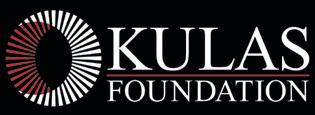
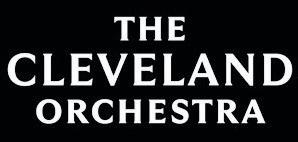







Guests with Pavilion seats who arrive after the start of the concert may be asked to wait outside the Pavilion until the first convenient pause in the music, after which our ushers will help you to your seats.
Guests on the Lawn may bring their own chairs, but guests with high-backed chairs that obstruct others’ views may be asked to relocate to the rear of the Lawn. Rental chairs are available for a fee of $10 per evening. Tents, flags, balloons, or other structures that might obstruct views or present a hazard are prohibited. Open flames are also prohibited.
Audio recording, photography, and videography are prohibited during performances at Blossom. Photographs and videos can only be taken when the performance is not in progress. As a courtesy to others, please silence all electronic devices prior to the start of the concert.
All Blossom Music Festival events are presented in a smoke-free environment. Smoking or
vaping are not allowed anywhere on the grounds or in buildings once you have entered through the ticket gates. A smoking area is available outside the gates in a designated area of Parking Lot A.
In the event of severe weather, a coordinated campus-wide alert will be issued. Guests and staff will be directed to safety by our staff and loudspeaker system. Visit clevelandorchestra. com or text BLOSSOM to 844-955-4377 for weather updates and more information.
Free tram service between the parking lots and Smith Plaza and the Pavilion is available on a continuous basis before and after each concert. The ADA Van Service can pick up at the Main Gate with service to the Tram Circle.
The Blossom Friends of The Cleveland Orchestra host two Information Centers — one located outside the Main Gate across from the Lawn Ticket Booth and the other inside the Main Gate on Smith Plaza.
Download today for instant, secure, and paperless access to your concert tickets.
For more information and direct links to download, visit clevelandorchestra.com/ticketwallet or scan the code with your smartphone camera to download the app for iPhone or Android. Available for iOS and Android on Google Play and at the Apple App Store.
The Cleveland Orchestra is grateful to these organizations for their ongoing generous support of The Cleveland Orchestra: National Endowment for the Arts, the State of Ohio and Ohio Arts Council, and to the residents of Cuyahoga County through Cuyahoga Arts and Culture.
© 2024 The Cleveland Orchestra and the Musical Arts Association Program books for Cleveland Orchestra concerts are produced by The Cleveland Orchestra and are distributed free to attending audience members.
EDITORIAL
Kevin McBrien, Publications Manager The Cleveland Orchestra kmcbrien@clevelandorchestra.com
DESIGN
Judy Barabas, Red Swing Creative
ADVERTISING
Live Publishing Company, 216-721-1800
PLEASE RECYCLE






